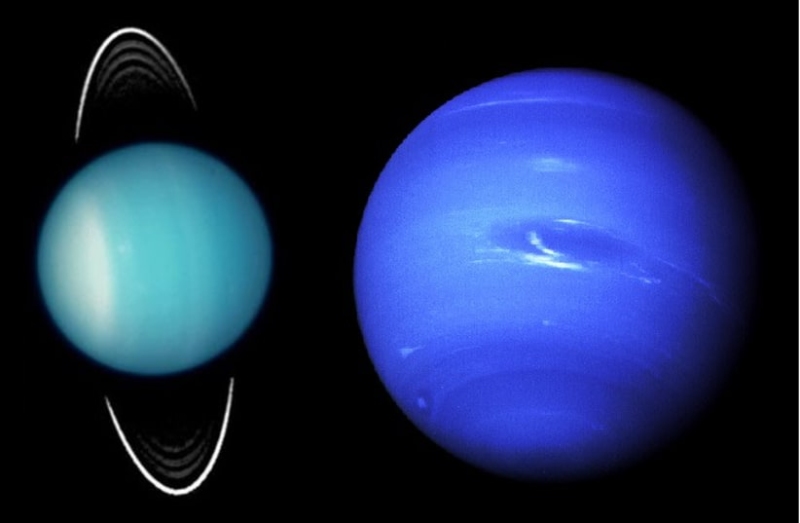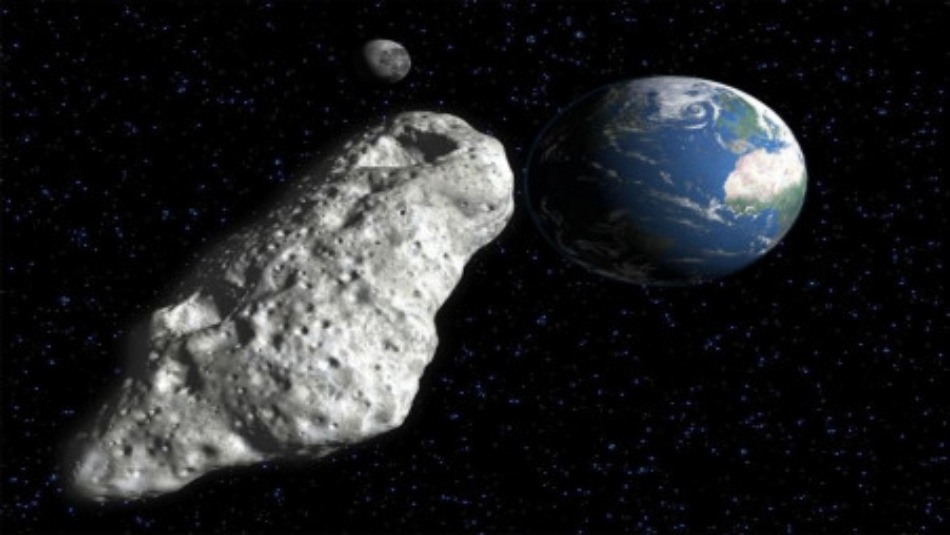Although Uranus is recognized for being green and Neptune for being a rich blue, a recent study has shown that the two ice giants’ colors are actually much closer than previously believed.
Thanks to research undertaken by Professor Patrick Irwin of the University of Oxford, the proper hues of the planets have been confirmed and have been published today in the Monthly Notices of the Royal Astronomical Society.
He and his team discovered that, contrary to popular opinion, Uranus seems pale cyan, and Neptune is a deep azure. In reality, both worlds are a comparable shade of greenish blue.
The majority of contemporary photos of the two planets do not fairly depict their actual hues, as astronomers have long known. The error originated from the fact that pictures taken of both planets in the 20th century—including those taken by NASA’s Voyager 2 mission, which was the sole spaceship to pass by both worlds—recorded photos in different colors.
The single-color photos were then recombined to produce composite color photographs, which were frequently produced “too blue,” especially in the case of Neptune, and were not always precisely balanced to produce a “true” color image.
Furthermore, Voyager 2’s early photographs of Neptune underwent significant contrast enhancement to better capture the winds, bands, and clouds that influence how we currently perceive Neptune.
“Although the familiar Voyager 2 images of Uranus were published in a form closer to ‘true’ color, or, Professor Irwin stated that those of Neptune were, in fact, stretched and enhanced, and therefore made artificially too blue. Even though the artificially-saturated color was known at the time among planetary scientists—and the images were released with captions explaining it—that distinction had become lost over time. Applying our model to the original data, we have been able to reconstitute the most accurate representation yet of the color of both Neptune and Uranus.”
HST/WFC3 images of Uranus from 2015 to 2022. The north pole, which has a softer green hue, swings downward in the direction of the Sun and Earth during this sequence. The equator and the latitude lines at 35N and 35S are indicated in these photos.
The Hubble Space Telescope’s Space Telescope Imaging Spectrograph (STIS) and the Multi Unit Spectroscopic Explorer (MUSE) on the European Southern Observatory’s Very Large Telescope provided data for the current investigation. Every pixel in both instruments is a continuous color spectrum.
This implies that the true apparent color of Uranus and Neptune may be clearly determined by processing STIS and MUSE images. The composite color photos captured by the Hubble Space Telescope’s Wide Field Camera 3 (WFC3) and the Voyager 2 camera were rebalanced by the researchers using these data.
This showed that, in reality, Uranus and Neptune have rather similar greenish blue hues. The primary distinction is the tiny bit of extra blue that Neptune possesses, which the model indicates is caused by a thinner haze layer on that planet.
The long-standing question of why Uranus’s color varies somewhat throughout the course of its 84-year cycle around the sun is likewise resolved by this study. The authors arrived at this conclusion by first contrasting brightness measurements—measured at blue and green wavelengths—with photos of the ice giant obtained from the Lowell Observatory in Arizona between 1950 and 2016.
According to these data, Uranus appears slightly greener during its summer and winter solstices, when one of the planet’s poles is oriented in the direction of our star. Its hue is slightly bluer during its equinoxes, which occur when the sun is overhead the equator.
Uranus’s extremely peculiar spin was known to be a contributing factor in this. During its orbit, the planet effectively rotates virtually on its side, causing either its north or south pole to point nearly directly towards the sun and Earth during the solstices. The significance of this, according to the scientists, lies in the fact that variations in the reflectivity of Uranus’s polar regions would consequently significantly affect the planet’s total brightness as observed from Earth.
The mechanism or reason for this reflectance variation is what astronomers were less certain of. As a result, the scientists created a model that contrasted the spectra of the polar and equatorial areas of Uranus. Because methane, which absorbs red light, is roughly half as plentiful toward the poles as it is near the equator, it was discovered that the polar regions are more reflective at green and red wavelengths than at blue wavelengths.
This did not, however, account for the entire hue shift, so the scientists introduced a new component to the model: a “hood” of progressively thicker frosty haze that has been seen over the summer sunlit pole as the planet swings from equinox to solstice.
This is most likely composed of particles of methane ice, according to astronomers. Uranus appears greener around the solstice because the ice particles, when simulated in the model, considerably enhanced the reflection at green and red wavelengths near the poles.
“This is the first study to match a quantitative model to imaging data to explain why Uranus’s color changes during its orbit,” Professor Irwin stated. In this way, we have demonstrated that Uranus is greener at the solstice due to the polar regions having reduced methane abundance but also an increased thickness of brightly scattering methane ice particles.”
The Association of Universities for Research in Astronomy’s (AURA) Dr. Heidi Hammel, who has studied Neptune and Uranus for decades but was not involved in the work, stated, “The misperception of Neptune’s color, as well as the unusual color changes of Uranus, have bedeviled us for decades. This comprehensive study should finally put both issues to rest.”
Continuing the legacy of Voyager in the 1980s, the ice giants Uranus and Neptune continue to be a fascinating destination for future robotic explorers.
“A mission to explore the Uranian system—from its bizarre seasonal atmosphere, to its diverse collection of rings and moons—is a high priority for the space agencies in the decades to come.” stated co-author of the new study, Professor Leigh Fletcher of the University of Leicester.
But even a long-lived planetary explorer in Uranus’ orbit could only record a brief moment in the Uranian year.
“Earth-based studies like this, showing how Uranus’s appearance and color has changed over the decades in response to the weirdest seasons in the solar system, will be vital in placing the discoveries of this future mission into their broader context,” said Professor Fletcher.




